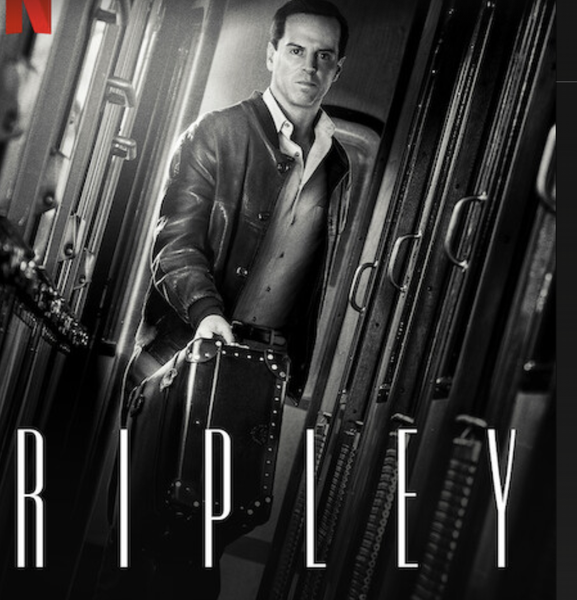
Right off the top, I
got two shocks while watching the Netflix version of “Ripley,” an eight-episode series now streaming on Netflix.
The first was how unexpected it seemed that Andrew Scott, the
true-to-his-nickname, “Hot Priest” in “Fleabag,” could play Tom Ripley with such cold, dead eyes, and the warmth of an Arctic squall.
It signaled that this would not be
the Talented Mister/Matt Damon-fest I remember from the 1999 movie. The Minghella-directed film was drenched in almost blindingly bright sunlight and glorious shots of the Italian Riviera, while
focusing on a trio of glamorous, hot-blooded characters, including Gwyneth Paltrow and Jude Law.
Whereas (and this is the second shock), this series is so high-noir that its black and white
background -- in which every frame is a piece of art, and more tense and chilling than anything Hitchcock did -- plays as much of a role as the characters.
advertisement
advertisement
As written and directed by Stephen
Zaillian, (who wrote “Schindler’s List”) and Robert Elswit, the director of photography, an Oscar winner for “There Will Be Blood,” the series stars the Irish Scott as
Ripley and the British actor Johnny Flynn as Dickie Greenleaf, the truant son living on his trust fund in a seaside villa in Italy with his American girlfriend, Marge (Dakota Fanning, in an
underwritten role). Dickie’s patrician father hires Tom to go find his son and convince him to come home and go to work in the family business. (Speaking of convincing, everyone's American
accents are on the nose.)
“Dickie” is an icky but also infantilizing name, and he’s played here as a much more psychologically layered character than the hard-partying and
cruel playboy Law in the earlier movie.
Dickie wants to be an artist but fled his family in New York City because he knows his father thinks he’s a failure. He’s no writer, so
he’s studying painting, but he’s a novice at 40 and his work is comically bad -- which he almost accepts.
Both actors are 40, much older than the 20-somethings in the movie. That
casts a heaviness as dark as Tom Ripley’s character. It’s more unsettling to be a 40-year-old petty grifter and cheat than someone just starting out in life.
In the beginning, the
character, as played by Scott, has such a creepliy sniveling 1940s noir look, that it's like he's wearing a mask. But the production details, sound design and enchanting cinematography are so
seductive that I wanted to start writing on vellum paper with an expensive fountain pen. The scratches, the light, the Picasso!
And yes, there’s much more art in this iteration, focused
mostly on an obsession with the Renaissance painter Caravaggio. At one point Zallian and Elswit are so visually brilliant that they recreate one of Caravaggio’s exquisitely lit scary paintings,
this time with the heads of two characters in the series.
There’s so much to see in these creepy interiors and patterns that you almost need to watch twice.
Yet I almost gave up
after the first two episodes. because cinematically, we got so much tension and dread, but the narrative was slow.
As with the book and previous movies, Tom finds Dickie on a beach in Italy
and expertly encroaches on his paradise. It takes double the time (two hours in) for Ripley to board the boat with Dickie, setting off the main crime drama. But that’s when the series
really picks up, and becomes not only worth watching, but brilliant.
The hotel clerks and the detectives have such wonderful faces and acting chops that they deserve spinoffs. The endless
climbing of stairs -- and beautiful spiral staircases -- becomes an inside joke. Do the steps serve as a metaphor for social climbing?
Ripley is a meticulously murderous character, and seeing
how his quick-thinking sociopathy operates is mind-bending.
In the end, we don’t know if good triumphs over evil, but Patricia Highsmith wrote five Ripley books in all -- called the
Ripliad. And the episodes end on enough of a new twist to seem that there will be a sequel -- and more blood.